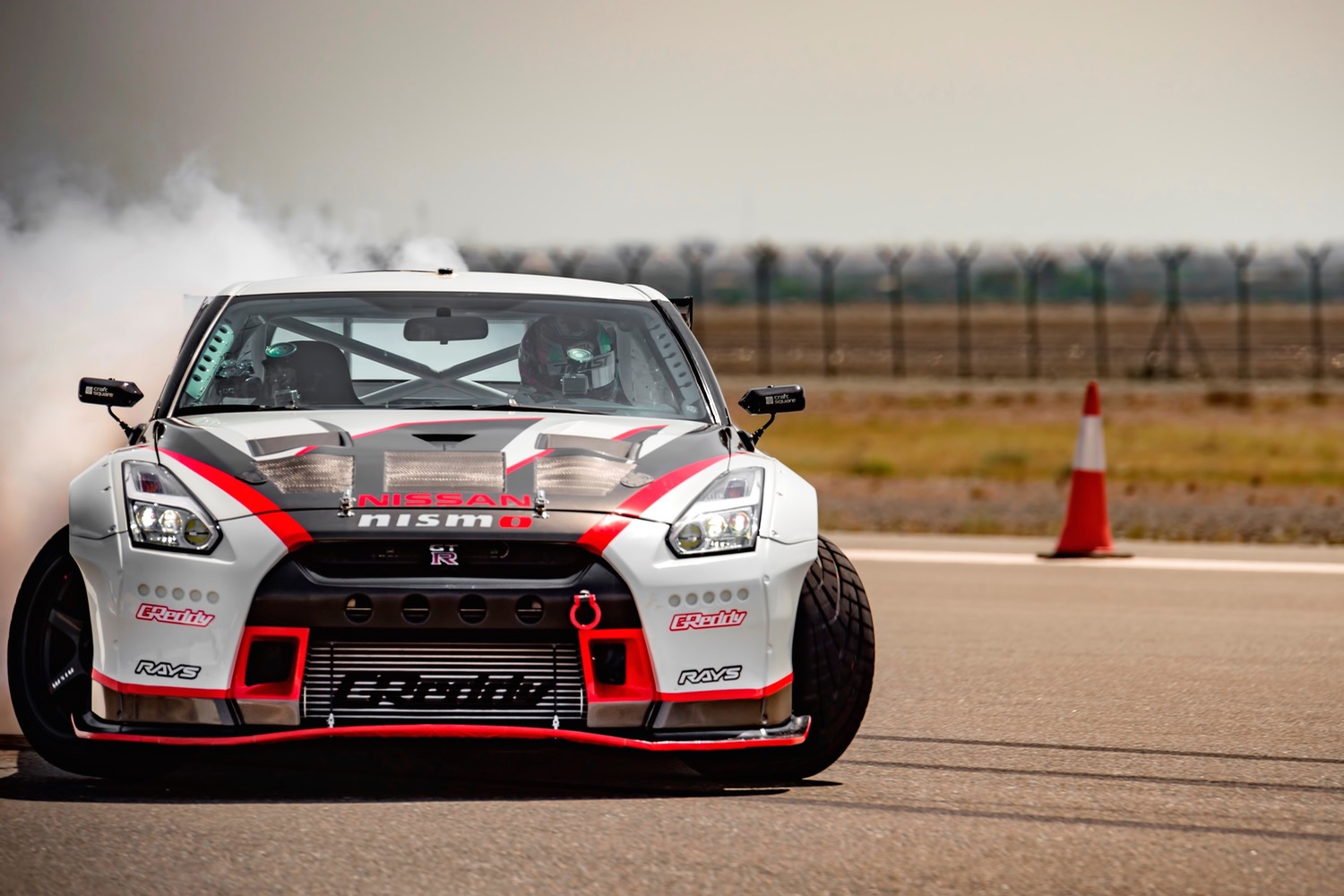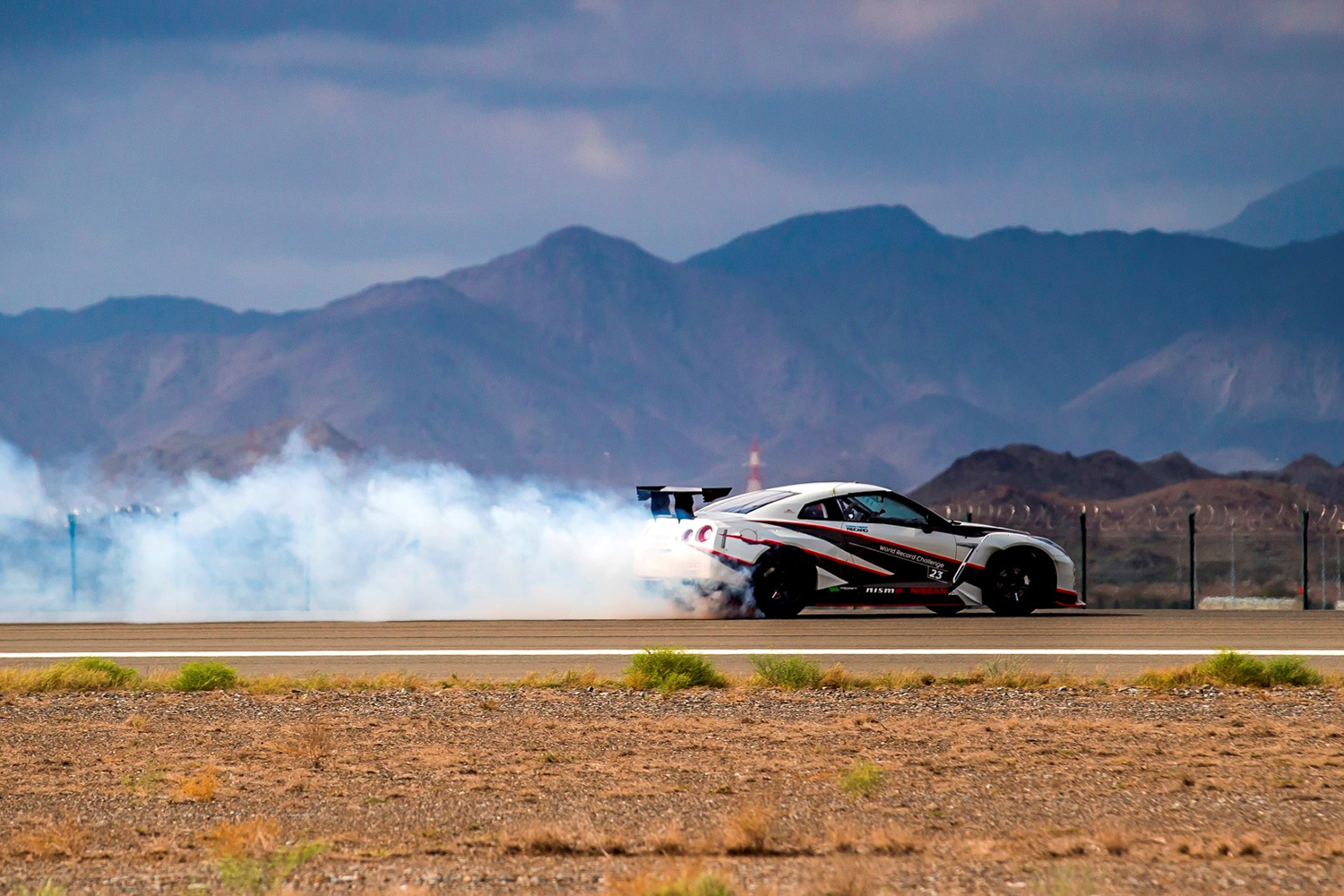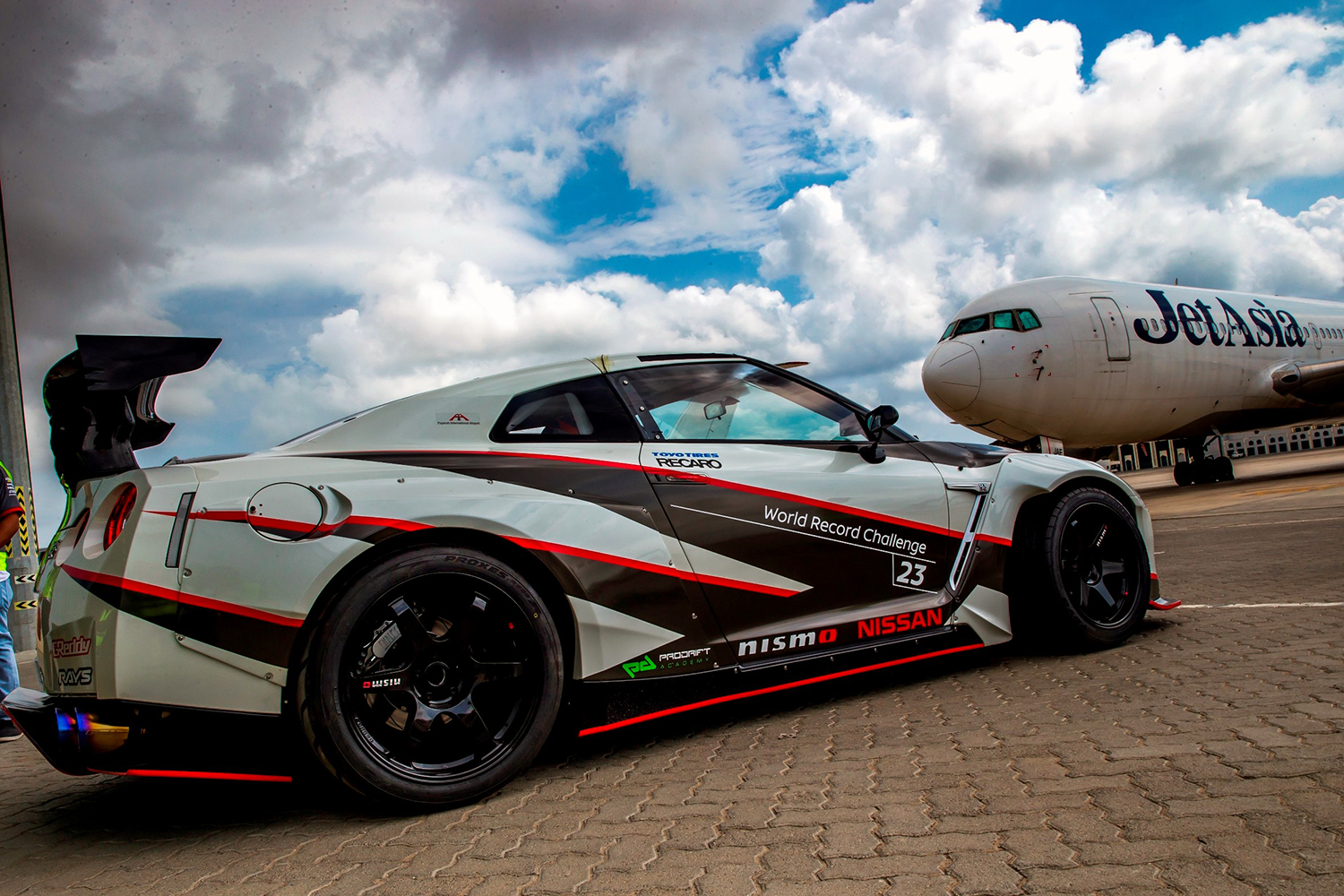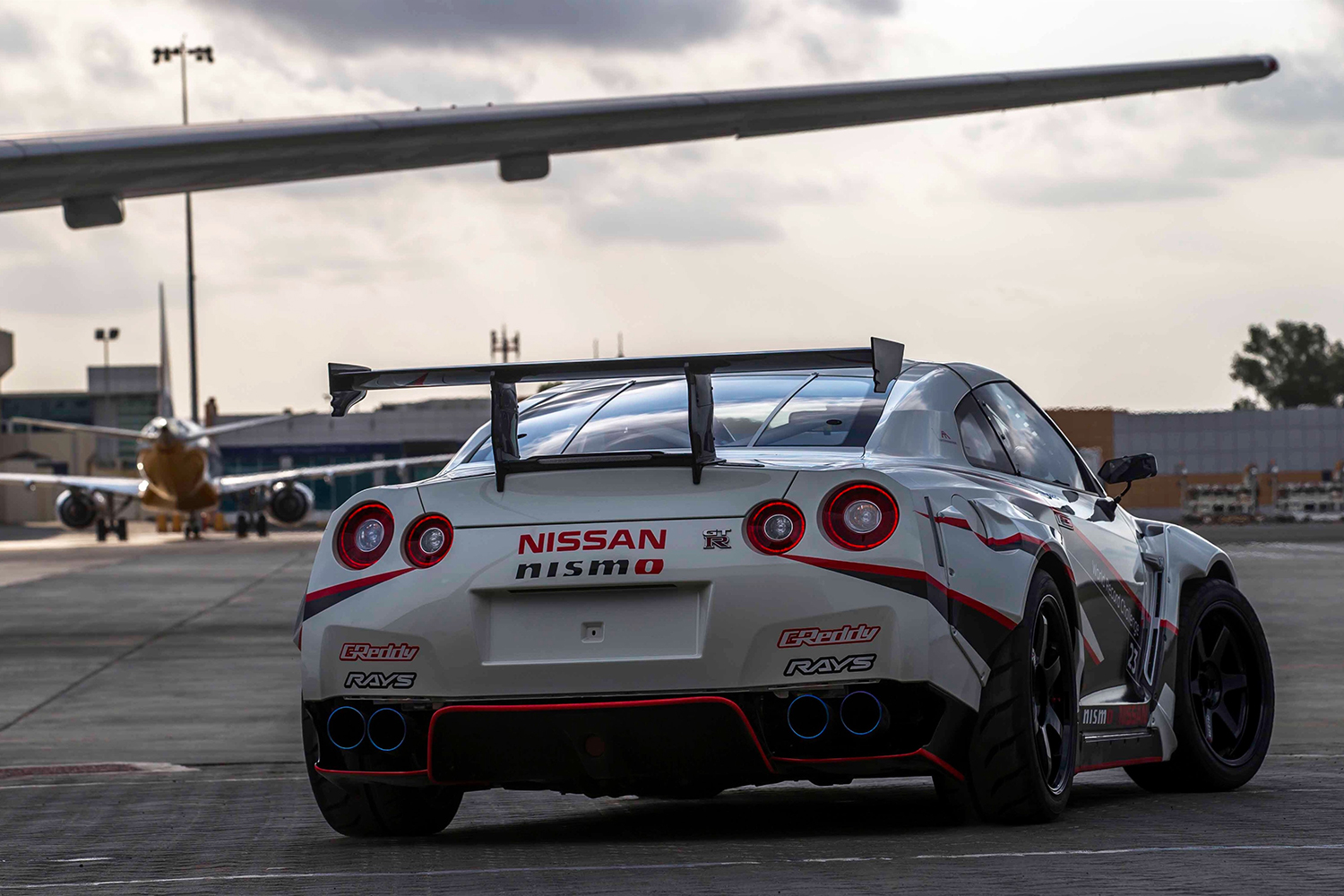So it sent a modified 2016 GT-R and Japanese drifting champion Masato Kawabata to an airport in the United Arab Emirates to smash that record. Kawabata achieved a top speed of 304.96 kph (189.4 mph) at Fujairah International Airport, beating the previous record set by Polish driver Jakub Przygoński. A speed of nearly 190 mph is impressive, but doing it while sideways at a 30-degree angle is even more impressive.
The car Kawabata used was no ordinary GT-R. The stock all-wheel drive system was ditched for rear-wheel drive, a mandatory feature in drifting because too much traction prevents drivers from getting the tail out. The 3.8-liter twin-turbocharged V6 was punched out to 4.0 liters with help from Japanese tuner GReddy Trust. That, along with other modifications increased power output to 1,380 horsepower.
Fujairah International Airport was chosen because it had a 3-kilometer (1.8-mile) runway, long enough for the car to get up to speed and still have room to drift. And the stunt helped promote the Nissan brand in the lucrative Middle East market, of course.
The GT-R is Nissan’s flagship, so it’s kind of interesting to see the company endorse something the car was never meant to do. In stock form, the GT-R is all about precision, not hooliganism. But GT-Rs are popular among drifters (who also have big budgets) because of their immense power and the model’s legendary status in Japan. Nissan knows a public relations opportunity when it sees one.
The current R35 GT-R has taken on its share of outlandish stunts, including this drift record and a speed trial on a frozen Russian lake. But there’s a new GT-R on the way, possibly with a hybrid powertrain. We’ll see what Nissan subjects it too.







